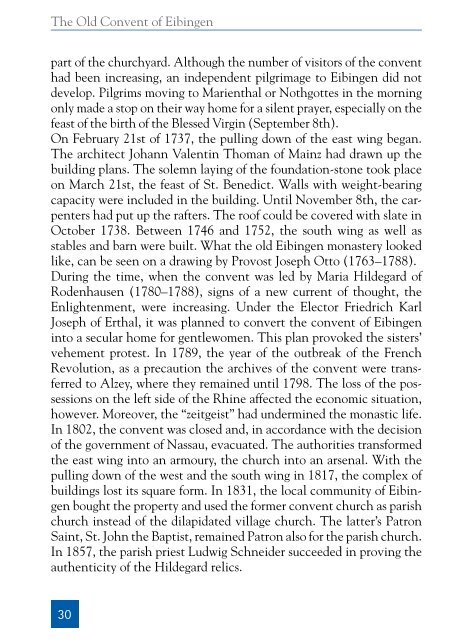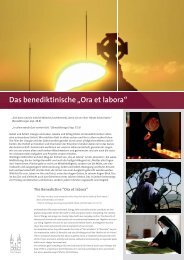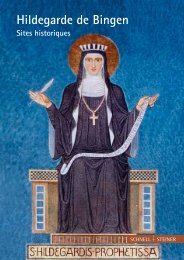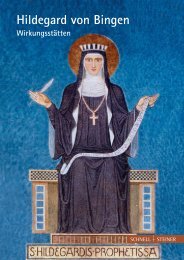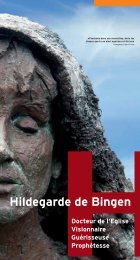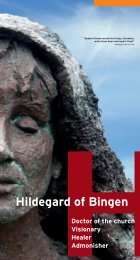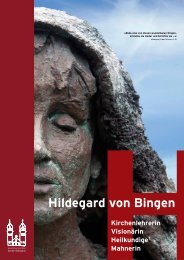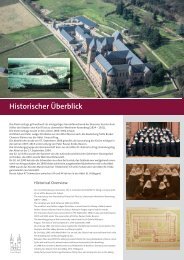Hildegard_von_Bingen_englisch
You also want an ePaper? Increase the reach of your titles
YUMPU automatically turns print PDFs into web optimized ePapers that Google loves.
The Old Convent of Eibingen<br />
part of the churchyard. Although the number of visitors of the convent<br />
had been increasing, an independent pilgrimage to Eibingen did not<br />
develop. Pilgrims moving to Marienthal or Nothgottes in the morning<br />
only made a stop on their way home for a silent prayer, especially on the<br />
feast of the birth of the Blessed Virgin (September 8th).<br />
On February 21st of 1737, the pulling down of the east wing began.<br />
The architect Johann Valentin Thoman of Mainz had drawn up the<br />
building plans. The solemn laying of the foundation-stone took place<br />
on March 21st, the feast of St. Benedict. Walls with weight-bearing<br />
capacity were included in the building. Until November 8th, the carpenters<br />
had put up the rafters. The roof could be covered with slate in<br />
October 1738. Between 1746 and 1752, the south wing as well as<br />
stables and barn were built. What the old Eibingen monastery looked<br />
like, can be seen on a drawing by Provost Joseph Otto (1763–1788).<br />
During the time, when the convent was led by Maria <strong>Hildegard</strong> of<br />
Rodenhausen (1780–1788), signs of a new current of thought, the<br />
Enlightenment, were increasing. Under the Elector Friedrich Karl<br />
Joseph of Erthal, it was planned to convert the convent of Eibingen<br />
into a secular home for gentlewomen. This plan provoked the sisters’<br />
vehement protest. In 1789, the year of the outbreak of the French<br />
Revolution, as a precaution the archives of the convent were transferred<br />
to Alzey, where they remained until 1798. The loss of the possessions<br />
on the left side of the Rhine affected the economic situation,<br />
however. Moreover, the “zeitgeist” had undermined the monastic life.<br />
In 1802, the convent was closed and, in accordance with the decision<br />
of the government of Nassau, evacuated. The authorities transformed<br />
the east wing into an armoury, the church into an arsenal. With the<br />
pulling down of the west and the south wing in 1817, the complex of<br />
buildings lost its square form. In 1831, the local community of Eibingen<br />
bought the property and used the former convent church as parish<br />
church instead of the dilapidated village church. The latter’s Patron<br />
Saint, St. John the Baptist, remained Patron also for the parish church.<br />
In 1857, the parish priest Ludwig Schneider succeeded in proving the<br />
authenticity of the <strong>Hildegard</strong> relics.<br />
30


